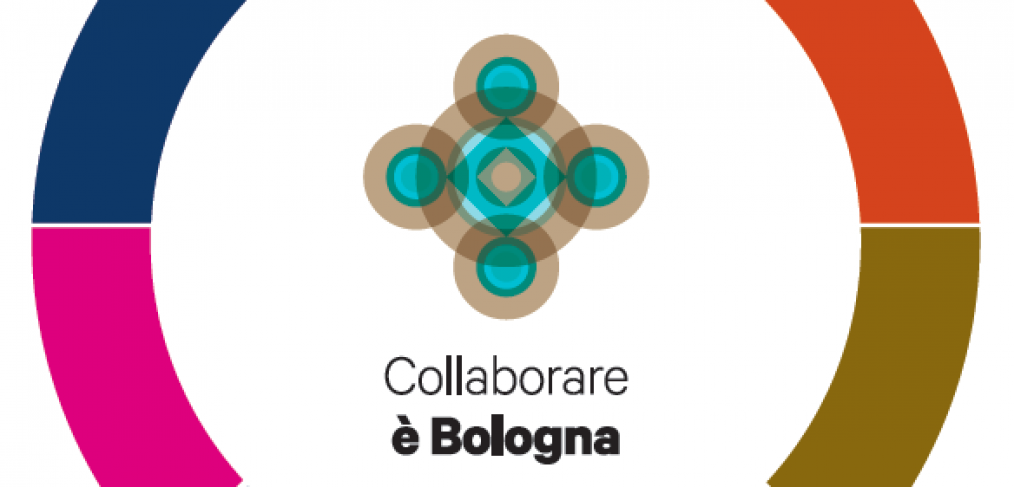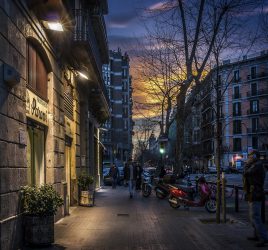
Bologna, a Laboratory for Urban Commoning
David Bollier
Anarchist anthropologist David Graeber argues in his recent book, The Utopia of Rules,that bureaucracy is the standard mechanism in contemporary life for coercing people to comply with the top-down priorities of institutions, especially corporations and government. Anyone concerned with the commons, therefore, must eventually address the realities of bureaucratic power and the feasible alternatives. Is there a more human, participatory alternative that can actually work?
The good news is that the City of Bologna, Italy, is pioneering a new paradigm of municipal governance that suggests, yes, there are some practical, bottom-up alternatives to bureaucracy.
Two weeks ago, the city government celebrated the first anniversary of its Bologna Regulation on public collaboration for urban commons, a system that actively invites ordinary citizens and neighborhoods to invent their own urban commons, with the government’s active assistance. I joined about 200 people from Bologna and other Italian cities on May 15 for a conference that celebrated the Regulation, which is the formal legal authority empowering citizens to take charge of problems in their city.
How does the program work?
It starts by regarding the city as a collaborative social ecosystem. Instead of seeing the city simply as an inventory of resources to be administered by politicians and bureaucratic experts, the Bologna Regulation sees the city’s residents as resourceful, imaginative agents in their own right. Citizen initiative and collaboration are regarded as under-leveraged energies that – with suitable government assistance – can be recognized and given space to work. Government is re-imagined as a hosting infrastructure for countless self-organized commons.
To date, the city and citizens have entered into more than 90 different “pacts of collaboration” – formal contracts between citizen groups and the Bolognese government that outline the scope of specific projects and everyone’s responsibilities. The projects fall into three general categories – living together (collaborative services), growing together (co-ventures) and working together (co-production).
Phase I projects over the past year included a kindergarten run by parents, a “social streets” initiative, and an urban agricultural coop. In the coming year a new set of Phase II test projects selected by citizens will attempt to extend the scope of the efforts – perhaps with collaborative housing and new sorts of social services provisioning, perhaps with new co-learning programs in the public schools and neighborhood markets.
Bologna’s self-declared ambition to become a “city of collaboration” has deep roots in its culture. It has long favored decentralized political authority and encouraged active citizen participation. Mayor Virginio Merola explained the city’s unusual stance toward development: “Our city relies upon common assets and social relationships – but we are also a city based on human rights and duties. Our traditions as a city have been based on collaboration.”
When Merola addressed the conference, he got quite emotional: “Being an attractive city means first of all, loving each other and not excluding,” noting that lots of Bolognese residents come from southern Italy and that there are 120 different ethnic groups in the city. In an apparent slap at fashionable technocratic management ideas, Merola said, “We are an intelligent city because we believe in feelings,” adding that “smart cities can be stupid.”
Unlike so many politicians who remain committed to tight, centralized control, Merola and his staff understand the virtues of decentralized participation: “The less that central administration is doing, the more things are working,” he said. “Everybody needs to have power to do something for their lives.” In this, a venerable Bolognese ethic meets up with Internet sensibilities, yielding a new model of city management.
The City of Bologna is quite serious about becoming a “city of collaboration.” City officials regard it as a unifying vision, and almost a brand identity – one that aligns Bologna with some of the larger trends sweeping global culture today, such as open source software, social networks, and DIY innovation. The City has even developed a “personalized logo” that allows anyone to produce a unique symbol that is graphically integrated with the general city logo — as if to say, we are all different, but we can all be Bolognese.
Luca Rizzo Nervo, the city’s development officer, explained that Bologna’s community development model “goes back to the real meaning of community. We need a collaborative ecosystem – a new way of living and working together.” Nervo hopes to create a national and international network of collaborative cities. Torino is already in the process of adopting the Regulation, and a number of other Italian cities, including Alessandria, Muggia and Rome, have expressed interest in the concept.
Of course, it’s not as easy as passing a new city ordinance. What’s really needed is a new cultural orientation and cultivation of new social practices – and those take time and commitment. It requires a retreat from bureaucratic formalism and an appreciation for the power of informal process and personal relationships.
Becoming a “collaborative city” requires that various stakeholders find new ways to work together, moving beyond political gamesmanship and bureaucratic maneuvering. Citizens, business, schools, and government, among others, have to learn how to make long term, good-faith commitments to each other and the process. Inevitably, any city will have to do its own experimentation and adaptation to learn how to make collaboration work within its distinctive culture.
This process, however, has the distinct advantage of limiting political conflict and ideological factionalism. Because goals are mutually set and programs co-designed, everyone’s focus is more on working through differences than on trying to “beat” the political opposition. The openness of the process also helps avoid NIMBY-ism (Not in My Backyard) and refresh the legitimacy of government action in an ongoing way. Unlike a bureaucracy, the system is designed for rapid citizen feedback and constant iteration. In time, citizens realize that they can adopt a different attitude toward government and become meaningful participants in the process of self-governance. The city truly does belong to them.
Professor Christian Iaione, a legal scholar and commons activist, has been the driving champion of the Bologna Regulation, working through his law school in Rome, LUISS, and a project called LabGov (Laboratory for the Governance of Commons).
Iaione considers the project an attempt to mimic the social dynamics of open source software in city government – the “Ubuntu State,” as he puckishly calls it. (“Ubuntu” is a South African Bantu term that literally means “human-ness,” but more broadly means, “the belief in a universal bond of sharing that connects all humanity,” as Wikipedia puts it.)
I found the conference both inspirational (testimonies from various citizen groups) and educational (commentary from Sheila Foster, a law scholar from Fordham Law School who has written about urban commons, and from Neal Gorenflo of Shareable magazine, which is a big proponent of “shareable cities” policies).
The concept of urban commons has been gaining a lot of visibility lately. Here’s hoping that its various advocates, thinkers, and project pioneers will find each other soon and begin to build a new school of thought. It’s hard to imagine a more effective, attractive way of reclaiming our cities and making them happy, liveable places.


